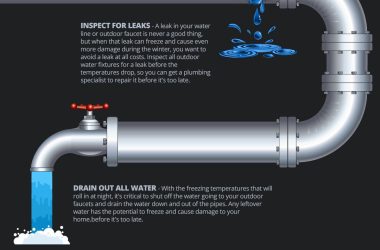Retained placenta in dogs can be a concerning issue for pet owners. The best way to remove a retained placenta in dogs is through a careful manual extraction. This process requires gentle but firm manipulation to ensure all remnants are safely removed. Seek immediate veterinary assistance if you suspect your dog is experiencing difficulties post-birth. Remember, prompt action is crucial to avoid complications.
How to Remove Retained Placenta in Dogs: A Comprehensive Guide
The Importance of Addressing Retained Placenta in Dogs
Retained placenta in dogs can be a concerning condition that requires prompt attention. After giving birth, dogs should expel the placenta within a few hours. However, in some cases, the placenta may not be fully expelled, leading to retention. This can pose serious risks to the mother dog’s health, including infection, hemorrhage, and even death. Therefore, knowing how to properly address and remove retained placenta is crucial in ensuring the well-being of both the mother and her puppies.
Signs and Symptoms of Retained Placenta in Dogs
Before diving into the methods of removing retained placenta, it’s essential to recognize the signs that indicate its presence. Some common symptoms of retained placenta in dogs include:
1. **Vaginal Discharge:** Abnormal discharge, possibly foul-smelling or containing blood.
2. **Lethargy:** The mother dog may appear weak, tired, or disinterested in caring for her puppies.
3. **Fever:** An elevated body temperature can indicate an underlying infection due to retained placenta.
4. **Loss of Appetite:** The dog may refuse food or water, showing signs of dehydration.
5. **Abdominal Pain:** Signs of discomfort or tenderness around the abdominal area.
If you notice any of these symptoms in your dog after giving birth, it’s essential to consult a veterinarian promptly for a proper diagnosis and treatment.
Methods for Removing Retained Placenta in Dogs
When dealing with retained placenta in dogs, there are several methods that veterinarians may use to address the issue effectively. Let’s explore these methods in detail:
Manual Removal
One common method for removing retained placenta in dogs is manual extraction. This procedure involves the veterinarian gently pulling on the placenta to help it detach from the uterus. It’s crucial to perform this process carefully to avoid causing injury or complications to the mother dog. Manual removal should only be done by a trained professional, as improper handling can lead to further issues.
Medication
In some cases, veterinarians may prescribe medications to help stimulate uterine contractions and facilitate the expulsion of the retained placenta. These medications can help the placenta detach naturally, reducing the need for invasive procedures. It’s essential to follow the veterinarian’s instructions carefully when administering any medication to your dog.
Surgical Intervention
If manual removal and medication are not successful or if there are complications associated with the retained placenta, surgical intervention may be necessary. Surgery is typically considered a last resort and is reserved for cases where other methods have failed. During the surgery, the veterinarian will carefully remove the retained placenta while monitoring the dog’s vital signs to ensure a safe procedure.
Post-Removal Care for Dogs with Retained Placenta
After the retained placenta has been successfully removed, it’s crucial to provide proper post-removal care to ensure the mother dog’s full recovery. Here are some essential steps to follow:
1. **Monitor for Any Signs of Infection:** Keep a close eye on the dog for any signs of infection, such as increased vaginal discharge, fever, or lethargy. If you notice any concerning symptoms, contact your veterinarian immediately.
2. **Provide a Comfortable and Quiet Environment:** Allow the mother dog to rest in a quiet and comfortable space away from stressors that could impede her recovery. Provide clean bedding and ensure she has access to food and water.
3. **Follow-Up Veterinary Visits:** Schedule follow-up appointments with your veterinarian to monitor the dog’s progress and ensure that she is healing properly. Your veterinarian may recommend additional treatments or medications as needed.
Preventing Retained Placenta in Dogs
While it’s essential to know how to remove retained placenta in dogs, prevention is always the best approach. Here are some tips to help reduce the risk of retained placenta in dogs:
1. **Regular Veterinary Check-Ups:** Ensure your dog receives regular veterinary care, including prenatal check-ups during pregnancy. Your veterinarian can monitor your dog’s health and address any potential issues early on.
2. **Proper Nutrition:** Provide your dog with a balanced diet rich in essential nutrients to support a healthy pregnancy and delivery. Consult your veterinarian for recommendations on the best diet for your pregnant dog.
3. **Stress Reduction:** Minimize stressors in your dog’s environment before and after giving birth. A calm and supportive atmosphere can help reduce the risk of complications during delivery.
By following these preventive measures and being informed about how to remove retained placenta in dogs, you can help ensure a smooth and safe delivery for your furry companion.
In conclusion, addressing retained placenta in dogs requires prompt attention and appropriate care to safeguard the health of the mother dog and her puppies. By recognizing the signs, understanding the removal methods, and providing post-removal care, you can help your dog recover successfully. Remember, always consult your veterinarian for guidance and support when dealing with any reproductive issues in your canine companion.
What should you do if your dog has a retained placenta?
Frequently Asked Questions
How is retained placenta in dogs identified?
Retained placenta in dogs can be identified by observing symptoms such as prolonged straining without delivery, foul-smelling discharge, and signs of discomfort or fever after giving birth. If you suspect retained placenta in your dog, it is crucial to seek veterinary assistance promptly.
What are the potential risks of retained placenta for dogs?
Retained placenta in dogs can lead to serious complications such as infection, uterine inflammation, and even sepsis if left untreated. These risks can significantly impact the health and well-being of your dog, making timely intervention crucial.
How is retained placenta treated in dogs?
Removal of retained placenta in dogs typically involves a veterinary procedure known as manual extraction. This process may require sedation or anesthesia to ensure the dog’s comfort. It is essential to follow your veterinarian’s recommendations and guidance throughout the treatment process to prevent further complications.
Can retained placenta in dogs resolve on its own?
Retained placenta in dogs is unlikely to resolve on its own and may require veterinary intervention. Delaying treatment can increase the risks of infection and other complications, so it is crucial to consult a veterinarian if you suspect your dog has retained placenta after giving birth.
Final Thoughts
In conclusion, removing a retained placenta in dogs is a critical procedure that requires veterinary intervention. Manual extraction or medication may be necessary to prevent infection and other complications. Prompt treatment is essential for the health and well-being of the mother dog. If you suspect a retained placenta, seek immediate veterinary care for proper diagnosis and management of the condition. Remember, knowing how to remove retained placenta in dogs can save their lives.











